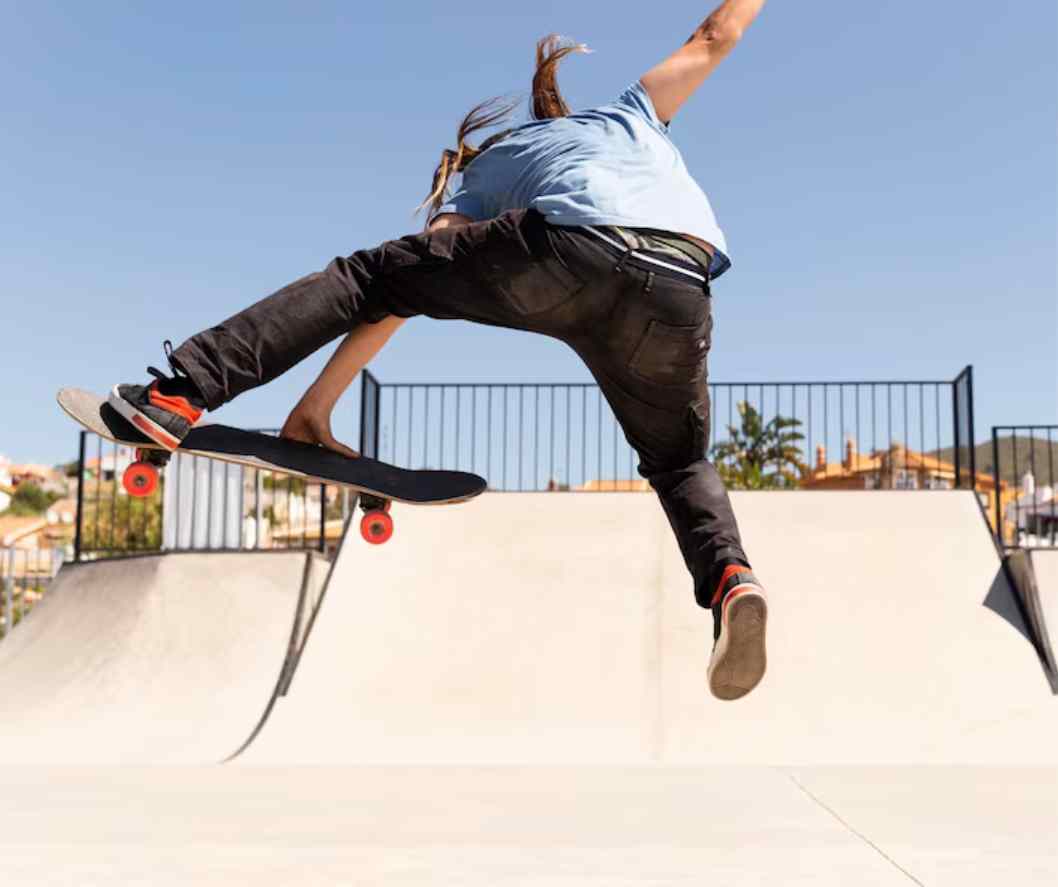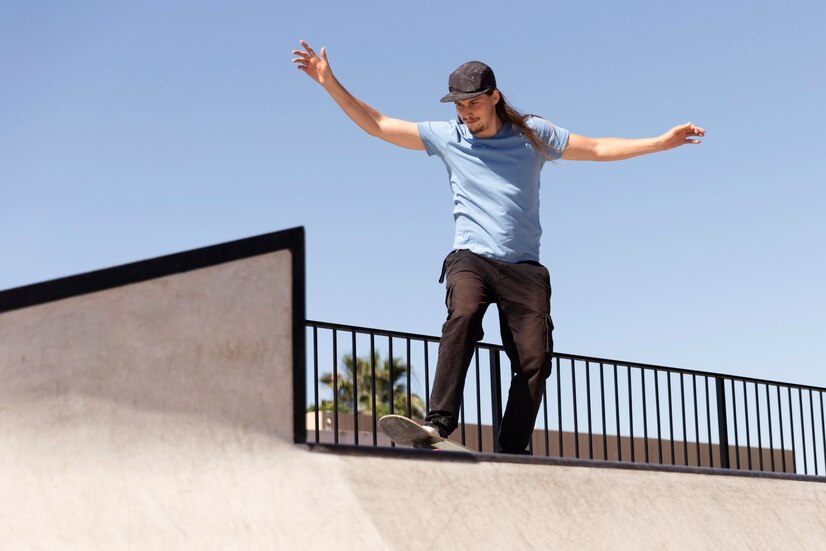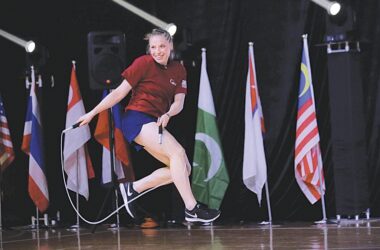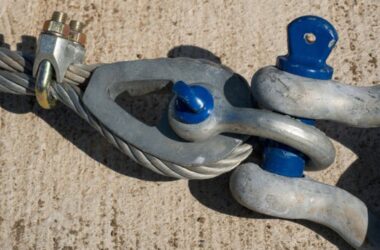Skateboarding is more than just a sport; it’s an art that requires finesse, control, and a deep understanding of your board. One of the fundamental aspects of skateboarding is weight distribution. The way you distribute your weight on the board can greatly impact your balance, stability, and overall performance. So, where exactly should your weight be when skateboarding? Let’s dive into this crucial topic and uncover the secrets to maintaining a solid stance on your skateboard. This content is brought to you by Skateboardtrends.com.
The Central Balance Point: Middle of Your Foot

When you step onto your skateboard, imagine a line running across the middle of your foot – this is your central balance point. It’s where the magic happens, where you establish a strong connection with your board and gain control over your movements. Placing your weight at the middle of your foot allows you to react quickly and make precise adjustments as you navigate the streets, parks, or ramps. This is especially important when you’re trying to build a portable clean room. By maintaining balance and control over your movements, you can ensure that all of the components come together perfectly. So, whether you’re working on a DIY project at home or a professional job site, remember to focus on your form and stay centered!
The Weight Distribution Dilemma
While the central balance point is the foundation, determining the exact weight distribution between your front and back foot can be a bit tricky. Skateboarding isn’t a one-size-fits-all activity; each skater has a unique style and preference. However, there are some general guidelines that can help you find your sweet spot. For example, tall skateboarders may find it helpful to shift their weight slightly towards the back foot for more stability. Check out https://skateboardtrends.com/skateboards/best-skateboards-for-tall-guys/ for more tips and tricks on finding your perfect stance.
Stabilizing Your Balance: The Back Foot Technique
Shifting your weight slightly towards your back foot can work wonders for stabilizing your balance. This technique is particularly helpful when you’re cruising at high speeds or attempting tricks that require precision. By giving a little more weight to your back foot, you create a solid anchor that keeps your board grounded and reduces the chances of wobbling.
The Quest for Comfort: Adjusting Foot Position
For beginners, achieving a comfortable and stable stance is paramount. Experiment with the angle and placement of your feet until you find a position that feels natural. Keep in mind that your front foot’s angle can influence your weight distribution. Once you’ve discovered the most comfortable setup, you’ll be better equipped to tackle the challenges of skateboarding with confidence.
Mastering the Ollie: Even Weight Distribution
When it comes to executing the iconic ollie, weight distribution plays a pivotal role. As you prepare to pop the tail and lift off the ground, your weight should be evenly distributed between both feet. This balance allows you to generate the necessary pop and control the board’s movement in mid-air. Remember, a well-executed ollie is the gateway to an array of advanced tricks.
The Intermediate Balance: Mid-Foot and Beyond
As you progress and become more proficient in skateboarding, your weight distribution may evolve. Intermediate skaters often find a comfortable balance by positioning their weight mid-foot or just slightly back from the ball of the foot. This adjustment ensures that the front and back of the board feel equally responsive, enabling smoother transitions and tighter control.
The Ultimate Goal: Balance and Control
In the world of skateboarding, balance is king. Whether you’re a novice or an experienced skater, finding the right weight distribution is crucial for maintaining control and stability. Remember, your skateboard is an extension of yourself, and the way you interact with it directly impacts your performance. Keep practicing, experimenting, and honing your skills until you discover the balance that empowers you to push your limits and reach new heights.
Conclusion
Skateboarding is an exhilarating journey that requires dedication, skill, and an understanding of its core principles. Weight distribution is a fundamental aspect that can make or break your experience on the board. By focusing on the middle of your foot, experimenting with weight shifts, and adapting to your skill level, you’ll unlock the true potential of skateboarding. So, embrace the learning process, master your balance, and let the streets become your canvas of endless possibilities.
FAQs
- How do I know if my weight distribution is correct?
Finding the right balance may take some trial and error. Pay attention to how your board responds to your movements and make gradual adjustments until you feel comfortable and in control.
- Can I distribute my weight differently for different tricks?
Absolutely! Certain tricks may require specific weight distribution for optimal execution. Experiment with different placements to see what works best for each trick.
- Is weight distribution the same for all skateboard sizes?
While the basic principles of weight distribution apply to all skateboards, the specifics can vary depending on the size and shape of your board. Adjust your technique accordingly.
- Should I always keep my weight centered, or are there exceptions?
While the central balance point is a solid foundation, there are instances where shifting your weight can enhance stability and control. It’s all about adapting to the situation.
- How long does it take to master weight distribution in skateboarding?
The learning curve varies from person to person. With consistent practice and a willingness to learn from your experiences, you’ll gradually improve your weight distribution skills over time.






